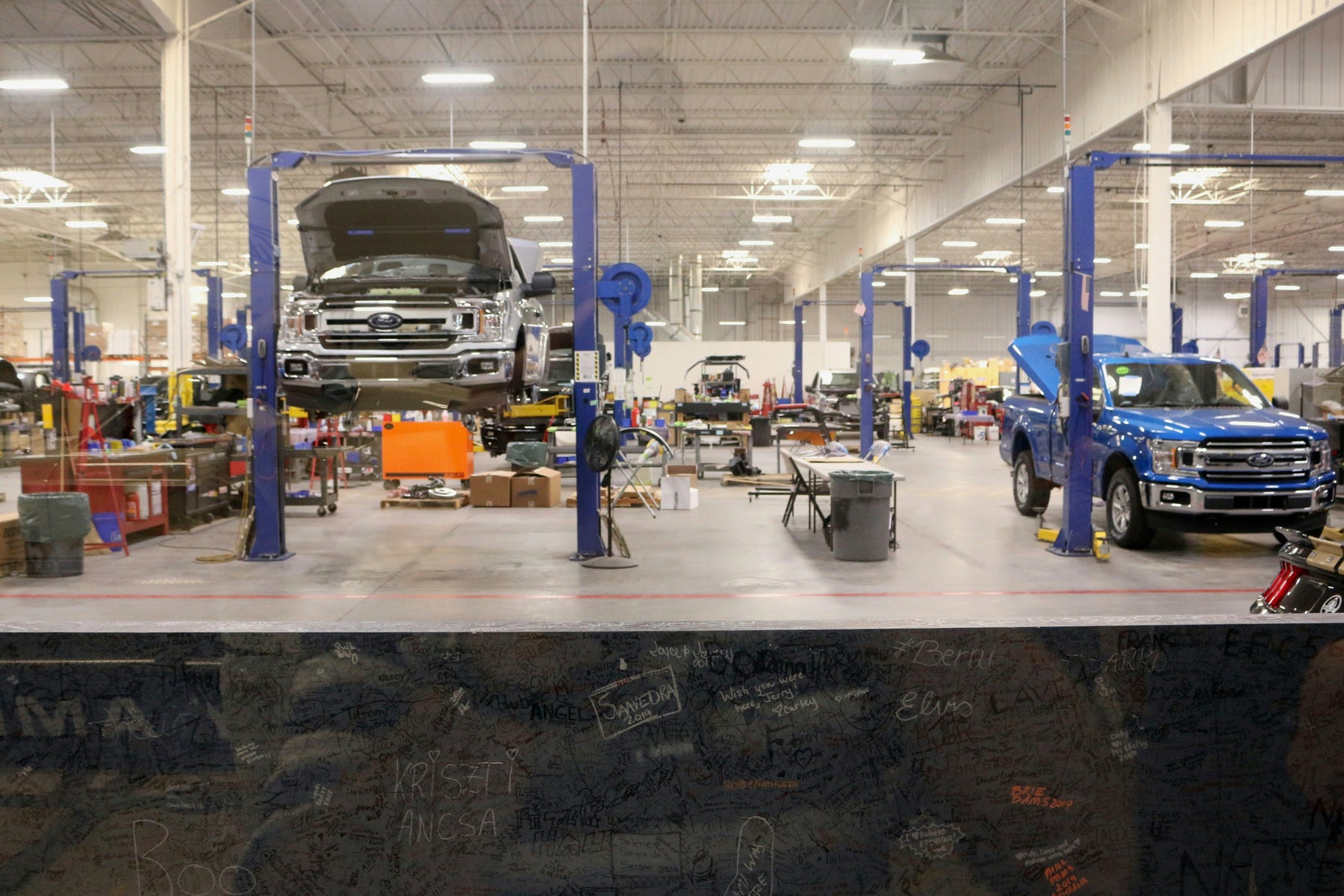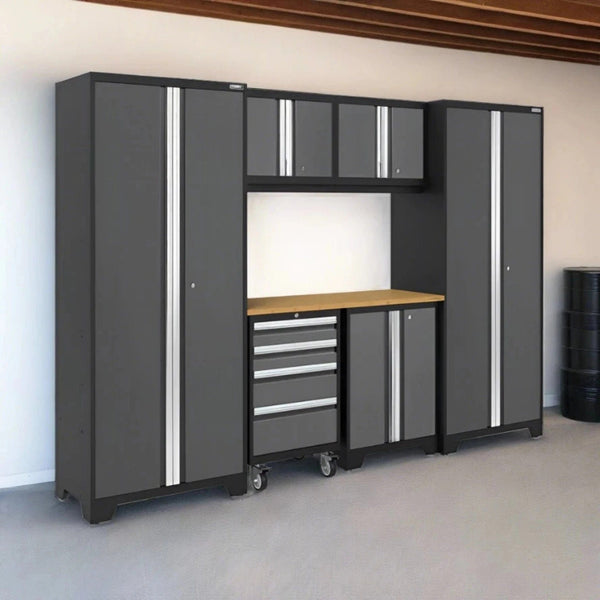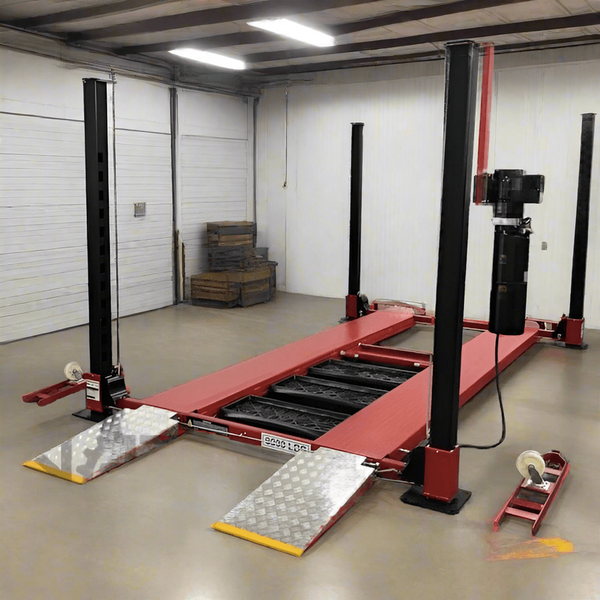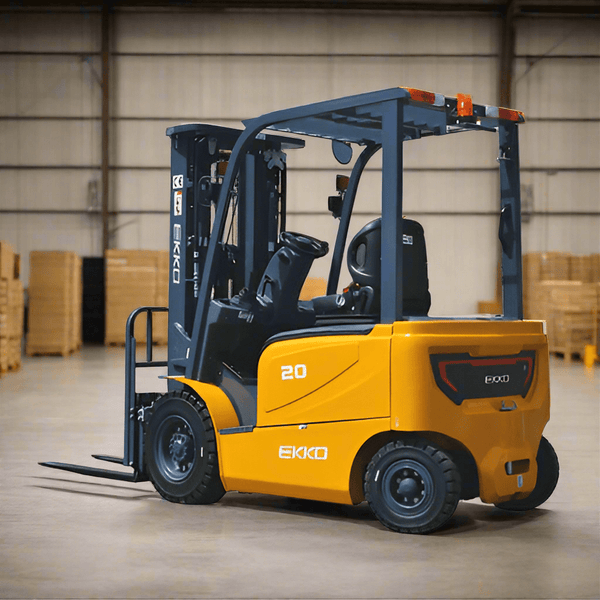
Symmetric vs Asymmetric Lift: Pros and Cons to Make the Right Choice
The right car lift can save tons of space and streamline your shop operation. But with so many different options on the market it’s easy to get overwhelmed. After narrowing it down to a 2-post car lift, you’ll reach another crossroads: choosing between a symmetric vs asymmetric lift.
Each has its place, and we’re here to help you decide which makes the most sense for your garage. A symmetric lift has four arms all the exact same length with columns positioned directly across from each other. It’s great for larger vehicles but takes up a lot more space.
On the other hand, asymmetric lifts have shorter front arms than rear arms with 30-degree column turn capabilities. These work best for lighter vehicles and make it easier to enter/exit the car. But, they’ll be somewhat limiting as far as larger cars go.
In this sense, picking between an asymmetric vs symmetric lift is fairly simple. It comes down to the type of cars you work on, how much space you have, accessibility/ergonomics, and a few other factors. We’ll help you feel more confident making the decision below.
Just know that either way, we have you covered with the premier car lift collection online at My Garage Supplies. We’ve curated a selection from the most trusted manufacturers and back our products up with world-class service. Get in touch today for a personalized recommendation!
| Feature | Symmetric Lift | Asymmetric Lift |
|---|---|---|
| Arm Design | Equal-length arms (front and rear) | Shorter front arms, longer rear arms |
| Vehicle Positioning | Vehicle centered between posts | Vehicle positioned rearward (approx. 60% behind posts) |
| Post Orientation | Posts are parallel (90° to base) | Posts are rotated inward (usually 30°) |
| Ideal For | Trucks, vans, longer or heavier vehicles | Sedans, compact SUVs, home garages |
| Door Clearance | Limited, vehicle doors often hit posts | Better access to driver’s side door |
| Garage Space Required | Requires more depth and clearance | Better for tighter or shallower spaces |
| Use Case | Commercial shops, heavy-duty lifting | Home use, light to moderate repairs |
What is the Difference Between Asymmetrical and Symmetrical Vehicle Lifts?
It’s worth noting that these lifts serve more or less the same function - raising a vehicle off the ground using a 2-post system. But, they do it in very different ways.
The difference between these two types of vehicle lifts ultimately comes down to how the arms are structured. Let’s take a closer look at the pros and cons of each below before comparing and contrasting them side by side.
Overview of Symmetric Car Lifts
Symmetric lifts use two posts spaced directly across from one another, with equal-length arms that create a square or rectangular lift footprint. This keeps the car’s center of gravity evenly distributed between the posts.
This style is common in commercial spaces where space is not an issue. Undercarriage access and lifting capacity are the top priorities in these shops, and the symmetric lift delivers on both fronts. It’s ideal for heavier vehicles like trucks, vans, and fleet service vehicles.
Of course, this type of lift has its limitations. The most obvious is restricted door access because the vehicle sits centered. Technicians/drivers won’t be able to enter or exit once the vehicle is raised.
Overview of Asymmetric Car Lifts
Asymmetric car lifts have a more unique geometry that improves access and optimizes space in the garage. They have uneven arm lengths, as the name implies. They’re shorter in front and longer in the reader.
But that’s not all, asymmetric car lifts also feature rotated columns (usually 30 degrees) so the vehicle can sit further back from center when lifted. Why is this important? It shifts as much as 40% of the car’s weight behind the posts while creating more room up front by the driver door.
This means the asymmetric lift is preferred when ease of access and efficient use of space are the main goals. They’re great for cars, light trucks, and compact vehicles where weight capacity isn’t a concern.
You’ll see these more commonly in home garages than you will commercial auto shops. But they do have their place in smaller shops and detailing bays where maneuverability is limited.
Symmetric vs Asymmetric Lift: Which is Right For Your Garage?
You might already be leaning towards a symmetric vs asymmetric lift based on the breakdown thus far. If not, though, we’ll take a closer look at where they differ below and help you choose the perfect 2 post car lift for your home or auto shop.
Vehicle Type
The first thing you should do is rule out either an asymmetric vs symmetric lift based on the type of vehicles you plan on lifting.
If you regularly lift full-size trucks, cargo vans, or long-wheelbase vehicles, you can safely assume a symmetric lift is going to be your best bet. Its equal-length arms and centered positioning can easily handle heavier loans while maintaining balanced support across the lift.
But if you mainly work on sedans, couples, and the occasional compact SUV, then you have a bit more flexibility in the type of lift you choose. An asymmetric lift may provide plenty of power and stability while also offering easier access and better use of space in your garage.
Garage Size and Layout
Speaking of space in your garage, you should also consider what you actually have room for. Remember, symmetric lifts need a lot more depth and open space for safe functionality. You need enough space to center the vehicle and move around it freely during service.
This is part of the appeal of asymmetric lifts: they’re perfect for tiger spaces like home garages or detailing bays. The angled posts and staggered arms let you pull the vehicle in without needing to align it dead center, so you’re maximizing usable floor space.
Frequency of Use
High-traffic shops or service centers benefit from symmetric lifts for their durability and load balance. These are engineered for continuous daily use and can support frequent lifting of heavier vehicles without wearing out.
In contrast, asymmetric lifts are easier to manage and offer more flexibility for general-purpose maintenance on smaller vehicles. This might be the better fit if you only plan on using the lift for weekend projects or light repairs.
Accessibility and Ergonomics
There’s a dramatic difference in accessibility and ergonomics between a symmetric vs asymmetric lift. The latter offers far more access to doors, especially on the driver’s side. It’s easy to get into and out of the vehicle as it’s raised.
On the other hand, symmetric lifts restrict door swing, especially in smaller garages. The posts are directly in line with the vehicle doors so you’ll have a harder time getting into and out of the car once it’s on the lift.
Storage vs Service
Maybe you’re not even interested in learning about the asymmetric vs symmetric lift difference for vehicle service - you just need a better long-term vehicle storage solution. In this case, a symmetric lift is likely your best bet as it provides a stable, evenly supported platform.
That’s not to say asymmetric lifts aren’t strong enough to store a vehicle on. They just tend to be better suited for frequent service work on passenger vehicles because it’s faster and easier to get in and out of the car and access certain areas, such as wheels and suspension.
So, is Symmetric or Asymmetric Lift Better?
Hopefully you have a solid grasp of whether a symmetric vs asymmetric lift is right for you at this point. The key takeaway is that one is not inherently better than the other - it’s just about what best suits your needs.
Choose a symmetric lift if you’re working on larger vehicles, have ample garage space, or need the highest level of load balance and lifting capacity.
Go with an asymmetric lift if you’re working in tighter quarters, primarily servicing smaller vehicles, and want better access to doors and front-end components.
If you still have any lingering doubts, don’t hesitate to reach out to our customer service team so we can talk about your situation and offer a personalized recommendation. Find the perfect lift at My Garage Supplies today!
Whether You Need a Symmetric or Asymmetric Lift, Your Search Ends at My Garage Supplies!
Whether you’re looking for the balanced support of a symmetric lift or the tighter footprint and door clearance of an asymmetric design, we’ve done the work of sourcing lifts that meet the highest standards for safety, reliability, and long-term performance.
We don’t stock everything we can. Instead, we’ve handpicked the best models from the top manufacturers in the industry. In other words, you can rest assured you’re getting the safe, reliable, high-performance lift you expect when you shop with us.
Our catalog includes clear capacity ranges, post heights, arm reach, and power requirements so you know exactly what you’re buying, too. No guesswork, no uncertainty.
Although you came here to choose between a symmetric vs asymmetric lift, we don’t just carry 2-post car lifts. My Garage Supplies has you covered with 4 car post lifts, car scissor lifts, single post car lifts, and everything else you need to streamline your garage.
If you're not sure which style is right for your garage layout or vehicle mix, our team can help. We walk you through the technical details, compare models side-by-side, and make sure you're selecting the right lift for your space and workload. Reach out now!
Wrapping Up Our Asymmetric vs Symmetric Lift Comparison
That does it for our overview of the symmetric vs asymmetric lift! It just comes down to knowing your space, your vehicles, and how you plan to use the lift day-to-day. Both have their place in shops across the nation. You may even find that you need both in a busy garage!
The right lift makes your work easier, safer, and more efficient - whether you’re storing, servicing, or both. So don’t settle for anything less than the best. Browse our carefully curated selection at My Garage Supplies and ugprade your workflow today.



